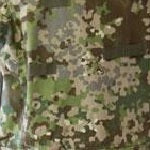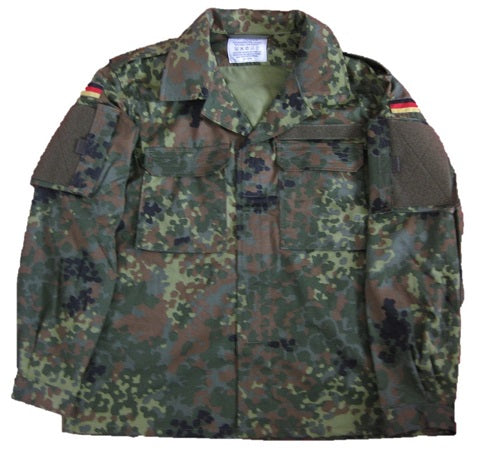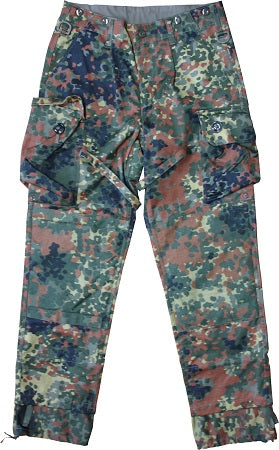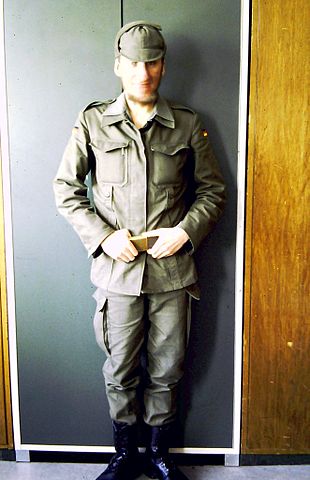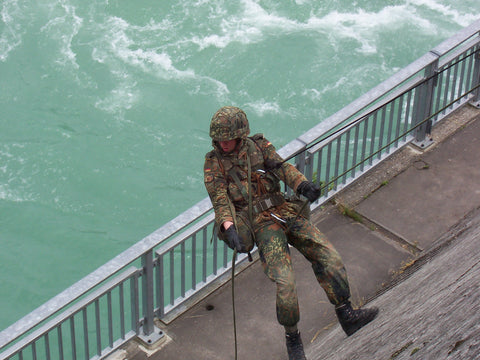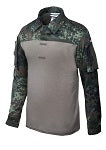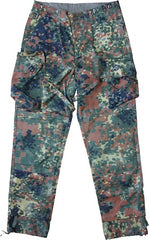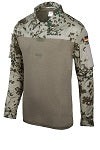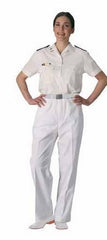
The field clothing of the Federal Armed Forces
The field clothing of the Federal Armed Forces
The Federal Armed Forces field clothing is the basic form of the combat suit, which is worn by soldiers in the combat training and office duty as uniforms. The field clothing can be supplemented or changed with different uniform parts.
Also, gloves and a BW Field-Jacket are added for the cold season.
Other additions to this are the combat helmet, the backpack, and the equipment in the backpack. This combination builds a combat suit or mission suit. Outside of the work, training and combat missions then wear the soldiers of the Federal Armed Forces no longer the Field Clothing, but the dress uniform.
The historical Development
Until 1918, all camouflage patterns in field clothing were improvised, until July 1918, the first standardized camouflage pattern for the field suit was introduced. In 1922, these standardized versions were adopted for the newly founded Reichswehr.

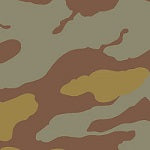
The field suits of the Wehrmacht during the Nazi era emerged from 1935. Much was taken over by the Reichswehr. During the Second World War, a partially standardized camouflage clothing was issued to the units of the Air Force, the Army, the Navy, and the Waffen-SS. From 1942, the military field suits were made from a splinter-camouflage pattern.
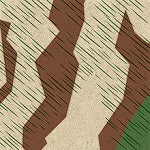
In 1955 after the Federal Armed Forces lineup, the field suit was taken over by the Wehrmacht or the Reichswehr in a slightly modified splinter camouflage pattern. It was a kind of tarpaulin fabric and a bit too wide cut.


In the mid-1960s, the German army then introduced a new uniform. This type o BDU was adapted to the NATO partner's design, in a monochrome olive variant with the RAL tone 6014 (yellow olive). The suit consisted of BW pants, a BW jacket, a combat helmet and a field cap (which later became the shuttle or beret) and combat boots. The material used here was first the so-called herringbone pattern. In the early 1970s, the replacement came through Moleskin.
In 1990, the field clothing was printed in German Flecktarn and consisted of field blouse, BW pants and an olive undershirt, stockings, a field cap, and combat boots. The material used was 65 percent cotton and 35 percent polyester. Nowadays there is the field suit with a Flecktarn camouflage print, which does not differ much from the 1990er version externally. The difference lies in the use of breathable materials and has also been developed for hot-humid applications (for example, the usage in Kosovo can be cited here).
The Functions
The BDU currently used in the Federal Armed Forces, the Flecktarn camouflage print, is particularly weather-resistant (water and wind-repellent), robust, flame-retardant with vector protection and antistatic. The material consists of 49 percent viscose, 2 percent Aramid and antistatic staple fiber together.
The Federal Armed Forces current field apparel consists of long and short underwear variants that are equipped with a cotton or polymer layer. There is also a light underwear cold protection suit and a flame-retardant fleece jacket. There is also a windproof and wet underwear suit and a tailored for the respective body of the soldier combat suit.
For all soldiers, there is then a secondary combat clothing as additional equipment. The fabric materials used in field clothing are coordinated with each other. Also, the moisture protection clothing can be packaged so that it fits into the combat suit. The combat suit is equipped with a padded collar, buttons, and large zippers and an elbow and knee pad that can be inserted.
The Federal Armed Forces carry out a different procedure here, the so-called onion peel principle. That makes it possible to adapt the outerwear to a particular climate zone with a slightly different camouflage print.
The different Shapes in different Locations
Tropics and Deserts
The field apparel used in the tropics is available in the variants Tropentarn camouflage print and a Flecktarn camouflage print. The basic shape and the carrying method are comparable to those of traditional field clothing.
Combat and Board Suit in the Navy
In the Navy, the combat and on-board suit is worn. In its basic configuration, this consists of a mid-blue shirt, dark blue trousers, a dark-built cap, a trouser belt, socks, and shoe covers. The boarding jacket and Bordparka then supplement the essential equipment. Also come the combat helmet, the combat boots, the sea boots, mission-related combat shoes (for other climates), loafers, Krempenhut, knitted hat, and wool socks with it.
Flight Service Suit
Those soldiers who serve as aircraft crew members in the Luftwaffe carry during their service the so-called flight service suit. That consists of the essential equipment of a blue cap, a flier combination in blue, pilot's boots and wool socks. There is also a field jacket and, as with the other soldiers, cold weather and wet weather protection equipment, a flame-retardant flight jacket, gloves, and scarf.
If members of the Air Force in the tropics are in use, there is still a sand colored version of the flight service suit.
Special Form Medical Service
For example, those soldiers who serve in the medical service wear white clothing made of white trousers and a white shirt in federal or hospital centers, such as civilian doctors. Additional rank insignia is attached to the shirt. For some time these rank marks were worn on the collar of the dress uniform's service shirt as a round metal pin with the logo of the medical service. However, this rule has been canceled. In combat use, the white armband of the red cross is worn by the medical staff on the left upper arm over the regular Flecktarn clothing.
The Rank Insignia
The field clothing in the Federal Armed Forces is, despite the existing variants for all types of troops in principle identical. The difference, however, is for example in the rank insignia of the different branches.
The soldiers from the army wear colored loops that show the branches on the field jacket, the combat jacket, the field blouse, the pullover or the all-season jacket underneath the existing service rank badge on the sleeve. At this point in the Air Force, the Luftwaffe's swingarm is present on the patches. In contrast to the army, the recruits of the Luftwaffe carry even in the lowest grade during the basic training the rank insignia loops with the wings on the shoulders of the clothing. In the air force, the different areas of responsibility (the so-called service sections) can only be recognized by their activity badges. In the Navy, the rank order of the teams and NCOs are identical to those of the army but are gold colored.
Camouflage Pattern Multitarn
In 2016, the new camouflage pattern Multitarn was introduced to the special forces in the Federal Armed Forces. This type of camouflage pattern is intended to consider the various operations of the Federal Armed Forces abroad and then provide appropriate camouflage in Germany, Europe, Mali, Afghanistan, and Iraq.
